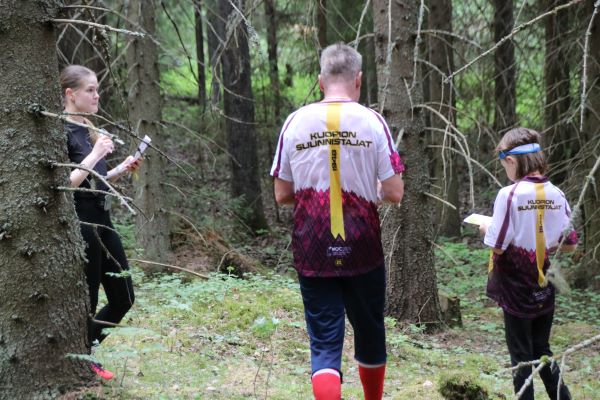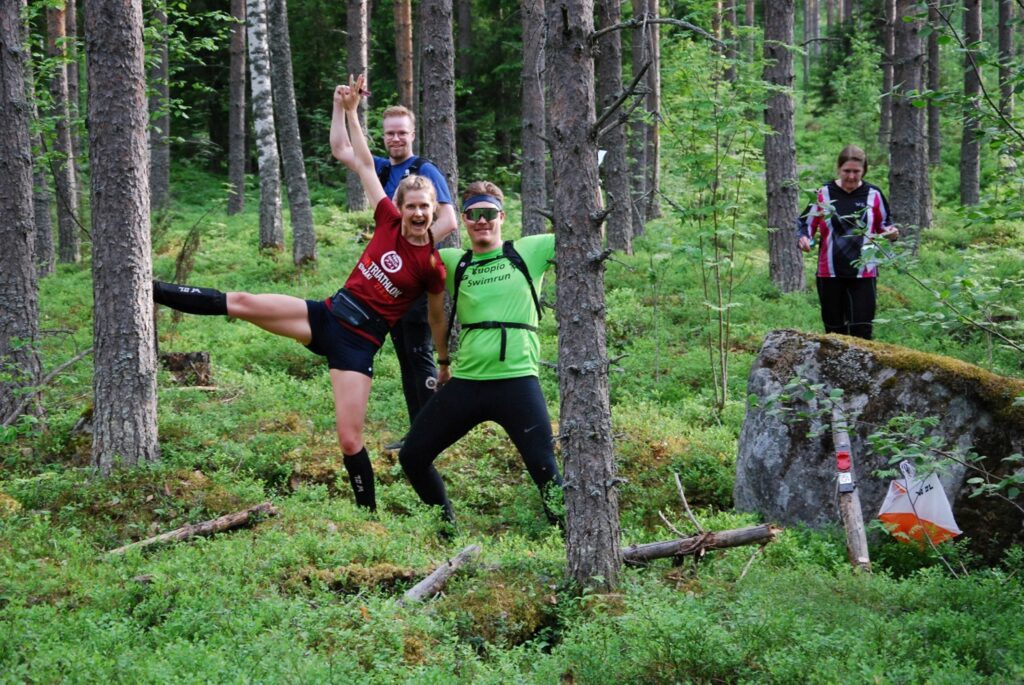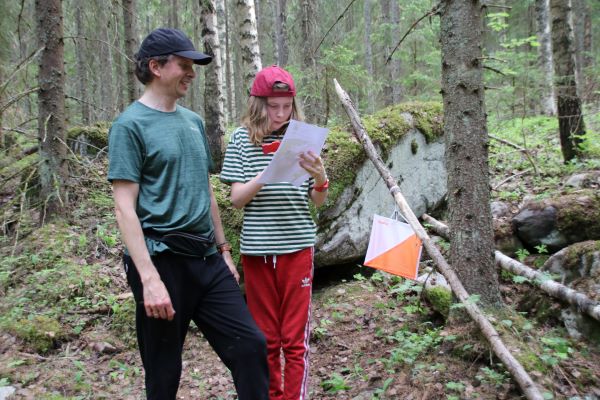On the fence about taking part?

On the fence about taking part?
Whether you’re a seasoned competitor or a first-timer, you too have the chance to orienteer the World Championship terrain. During the WOC Tour week, we will offer you the opportunity to do recreational in addition to the competition series. With an open class fee, you get the experience of orienteering and you can also come and watch the top orienteers in the World Championship arena.
Feel free to come along!
There are three levels of open classes orienteering courses: A, B and C. You can choose a longer or shorter course from each level.
The A tracks are sure to provide enough challenge for even the most experienced.
The B tracks are suitable for those who have already practised the sport for a while. A suitable distance and a challenge to find the control points.
The C tracks are suitable for beginners and children.
Below you can find some tips and advice for first-timers, or a refresher for the more experienced orienteering enthusiasts.

Preparation
If possible, visit your local orienteering club during the spring/early summer for fitness orienteering. The clubs may also arrange orienteering schools for beginners, which is a perfect way to start. This will give you a good basis for trying out the World Championships terrain. You can improve your fitness with a little jogging if you want to keep a bit more pace in the woods. You can also walk the course, as sometimes a slight drop in pace doesn’t negatively impact your standing or result.
You don’t have to go alone on the fitness trails either. You can do it in a group; ask your friends to join you!


Equipment
Any clothing suitable for outdoor sports is good for orienteering as well. For forest orienteering in particular, we recommend long-legged trousers, as they offer more leg cover which reduces scratches and prevents ticks from attaching. There are also special outfits for orienteering, but these are not a necessary purchase.
For footwear, you should choose, for example, trail running shoes. Of course, you can also wear regular trainers, but the grip is better with a coarse-grained sole. The best shoes for orienteering are studded shoes, as the studding on the sole gives grip and support to your stride.
A compass is a necessary piece of equipment to help you find your bearings and orientate your map. The traditional disk compass is probably better known and more people have experience of using it. Thumb compasses are also used, especially by competitive orienteers, but it takes some practice to use them.
EMIT card. In Finland, electronic punching, or EMIT, is the main method used for orienteering events. It is a small plastic card that is easy to carry thanks to a wide elastic band that slips over your finger. Usually, the EMIT is worn on the thumb, index finger or little finger. The EMIT is punched into a unit at each control point in the forest. The punch time and the information about the punch are then electronically recorded on the card. The data can be decoded at the finish line, giving everyone their own result. In addition to the total time, the data also includes the timing splits. The splits and results can be found online after the race. If you don’t own (or can’t borrow) an EMIT card, one is also available for hire from the open classes information desk. NOTE: It is compulsory to have an EMIT when setting off on the course. This way the organiser knows who has gone out and who has returned.
Small fitness orienteering glossary
fitness orienteering events = a fitness trail event, may also be called an open series
studs = shoes for orienteering with blunt studs on the bottom to provide grip for stepping.
EMIT/EMIT card = An electronic punching device used to punch at all controls. It records performance data such as splits and the codes of the CPs. The EMIT is inserted in the control unit with the point side down in a fixed direction.
EMIT reset / start unit = Before a run, the EMIT card must be reset to erase previous run data. The so-called zero puncher is similar to the puncher on the control points, but with a flashing light. When an orienteer inserts their EMIT card into the reset puncher, the light flashes. That means the EMIT is working. It takes about five seconds (five flashes of light) to reset. When the navigator takes their EMIT out of the zero puncher, the run begins and the timing starts.
control unit = Each CP has a control unit where the EMIT card is punched. This way, the visit to the control point is recorded on the card. There is no need to press the EMIT against the unit. It is sufficient to place the EMIT and the unit together like pieces of a jigsaw puzzle. The time required for punching is approximately one second.
Finish = When the orienteer arrives at the finish line, they punch their EMIT on the control on the finish line. The race timing ends with this punch.
Download = After the finish stamp, the orienteer proceeds to the Download. The event official instructs the orienteer to place their EMIT on the reader, where the performance data is decoded. The official will see if the orienteer has visited the correct CPs and will take the performance to the results.
Track specifications = A table on the edge of the map giving more detailed information about the tracks on the orienteering course. For an open class trail runner, the most important information in the course map are the control codes.
control code = Each control in the terrain has its own code. It is usually two or three digits. The orienteer must look at the course description to see what the code is for their course. This way they know that they are on the right track. There are a lot of controls in the terrain, and the orienteer’s map will only show their own controls.
string = a plastic, usually white, strip of signposting string on the ground. It is a string used on the smallest children’s racecourses to help them navigate by acting as an extra path to make sure they get to each control point. The string is visible on the child’s map, but it makes extra loops that the child can correct if they know how.

